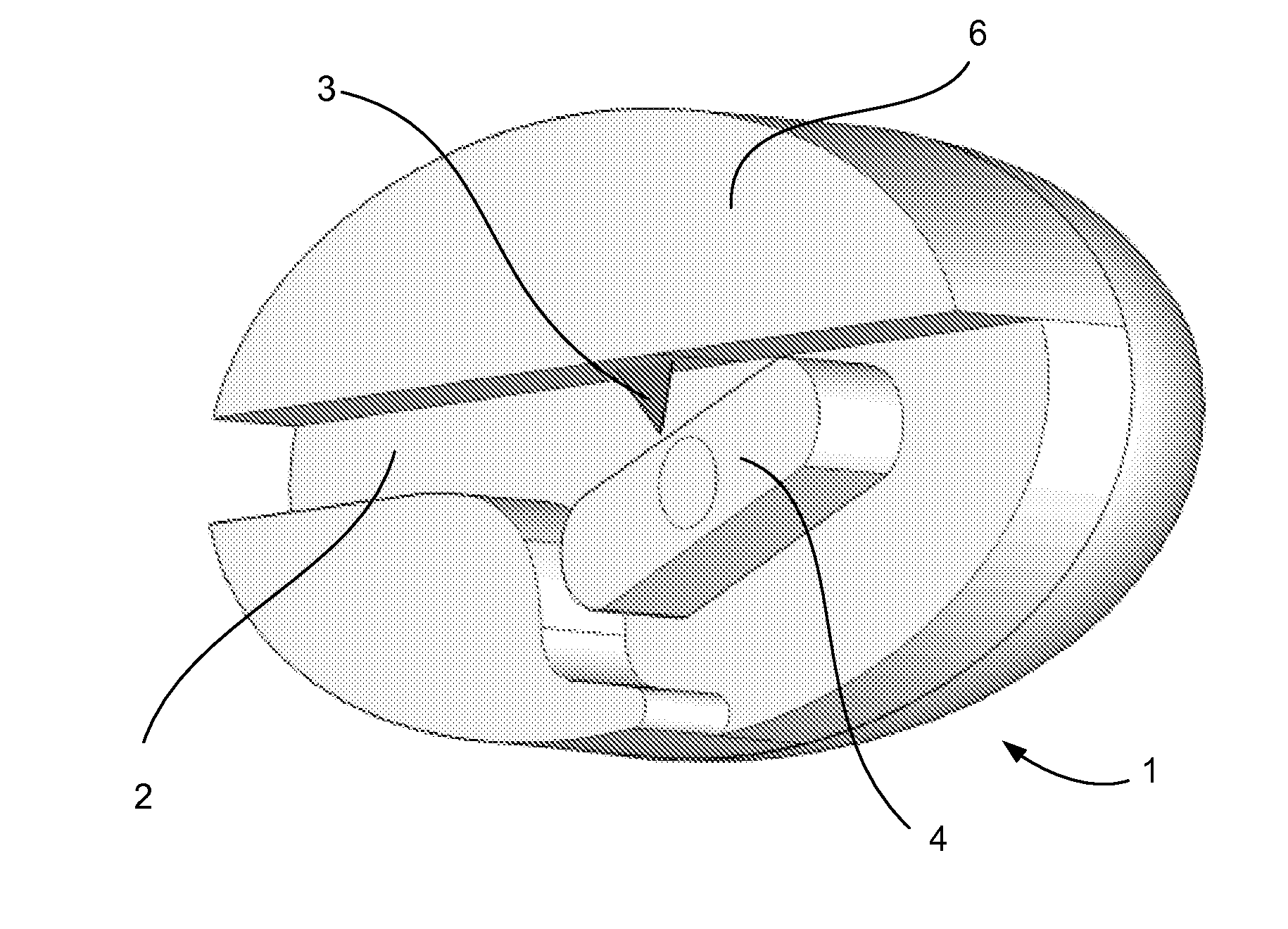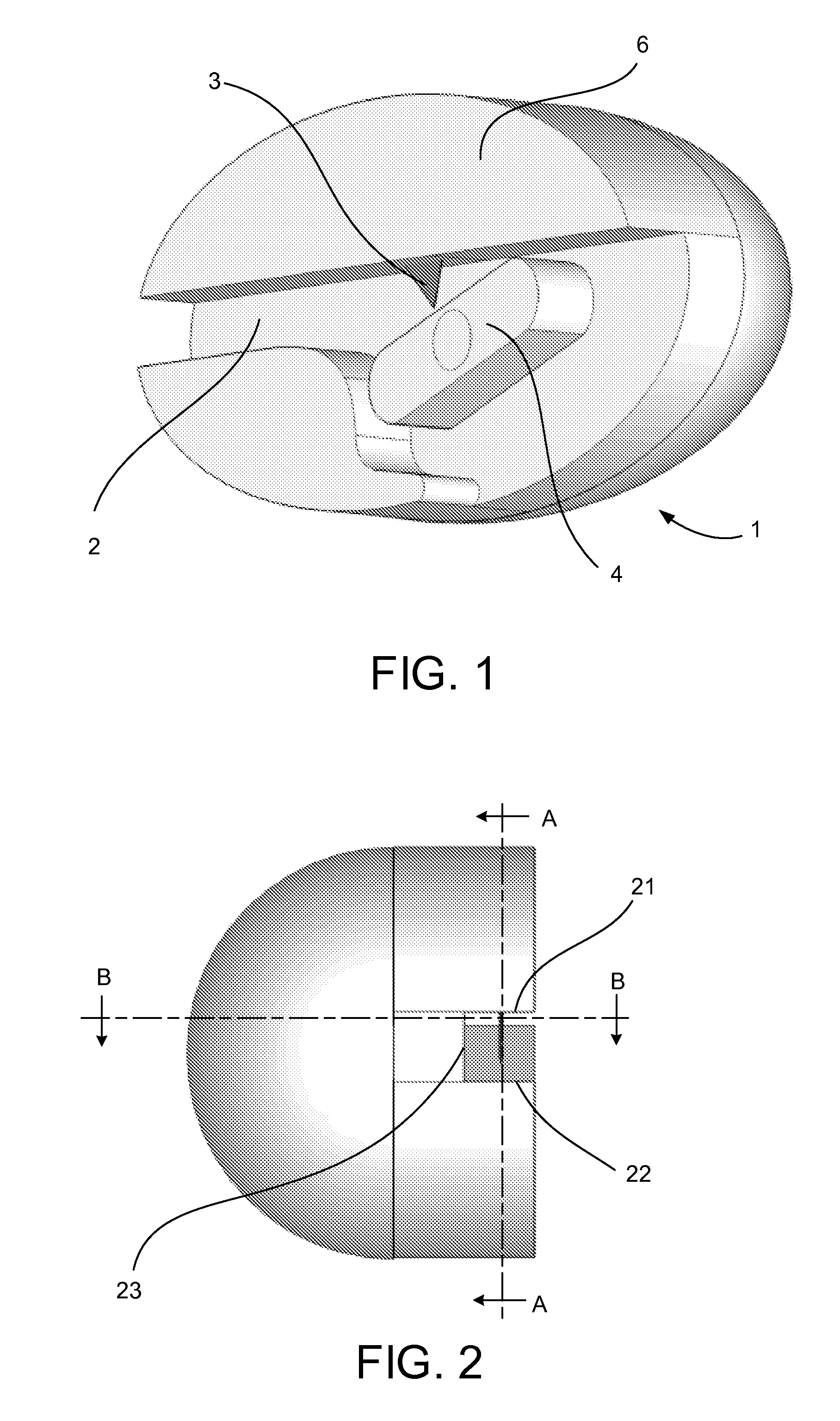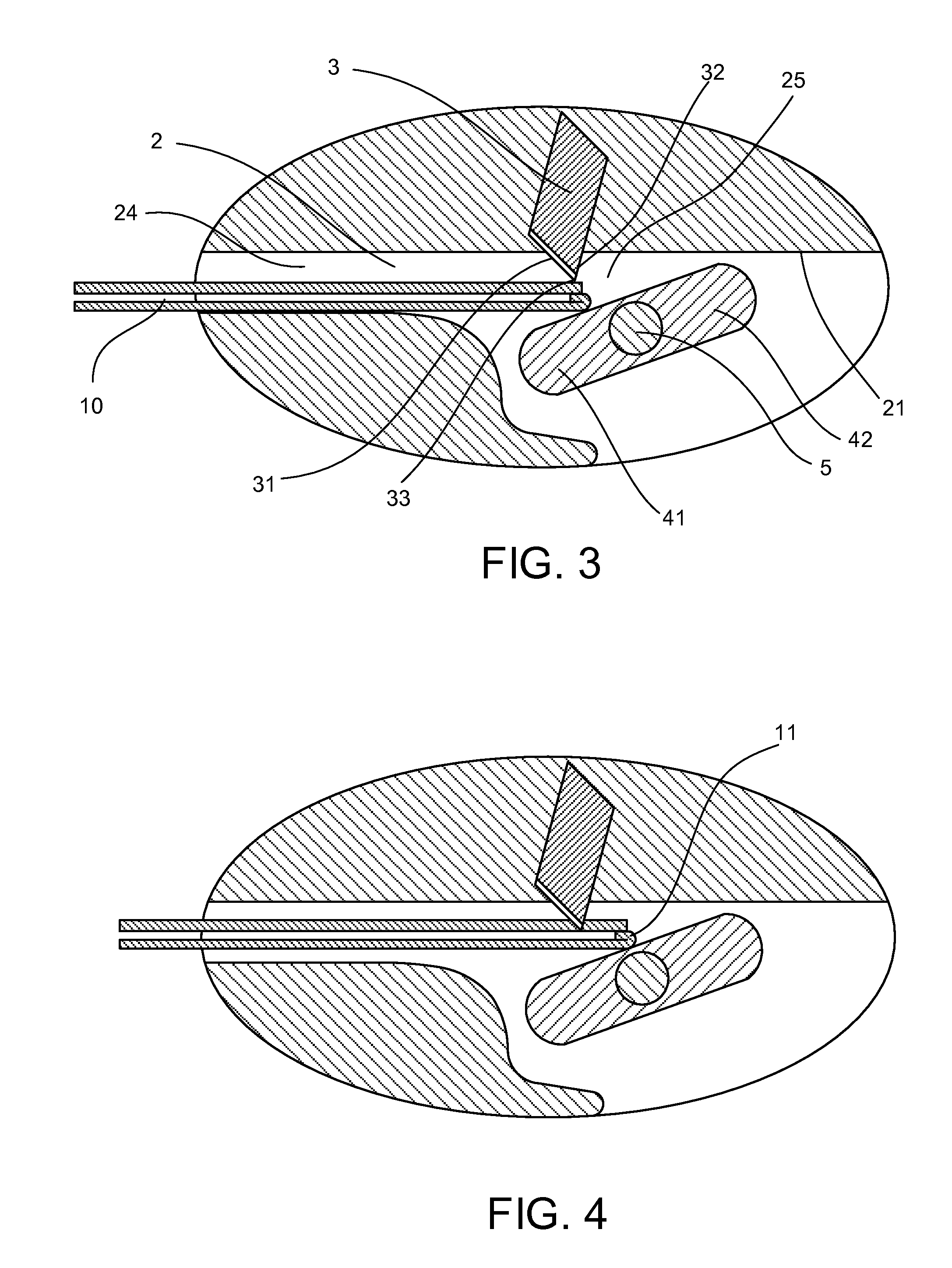Letter opener with protected blade and rocker
a technology of letter opener and protected blade, which is applied in the field of rocker type letter opener, can solve the problems of device for opening letters, inability, risk of injury, etc., and achieve the effect of convenient us
- Summary
- Abstract
- Description
- Claims
- Application Information
AI Technical Summary
Benefits of technology
Problems solved by technology
Method used
Image
Examples
Embodiment Construction
[0026]Referring to FIG. 1 and FIG. 3, a letter opener 1 comprises a housing 6 which is sized to be conveniently held in one hand and preferably has a width (w) of 4 to 10 cm, a height (h) of 2 to 4 cm and a depth (d) of 1 to 3 cm. Preferably the housing components 61 and 62 are of molded plastic.
[0027]A groove 2 extends along one side of the housing 6. The groove 2 comprises an upper wall 21, a bottom wall 22, and a side wall 23. The groove 2 is externally accessible for introducing and guiding an envelope 10 into an entry channel section 24 of the groove 2. Rearward of the entry channel section 24 the groove 2 widens into a cutting section 25. The upper wall 21 of the groove 2 extends substantially in a straight plane along both the entry channel section 24 and the cutting section 25 of the groove 2. The bottom wall 22 of the groove in the cutting section 25 is downwardly displaced relative to its position in the entry channel section 24. The entry channel section 24 of the groove ...
PUM
| Property | Measurement | Unit |
|---|---|---|
| angle | aaaaa | aaaaa |
| depth | aaaaa | aaaaa |
| height | aaaaa | aaaaa |
Abstract
Description
Claims
Application Information
 Login to View More
Login to View More - R&D
- Intellectual Property
- Life Sciences
- Materials
- Tech Scout
- Unparalleled Data Quality
- Higher Quality Content
- 60% Fewer Hallucinations
Browse by: Latest US Patents, China's latest patents, Technical Efficacy Thesaurus, Application Domain, Technology Topic, Popular Technical Reports.
© 2025 PatSnap. All rights reserved.Legal|Privacy policy|Modern Slavery Act Transparency Statement|Sitemap|About US| Contact US: help@patsnap.com



